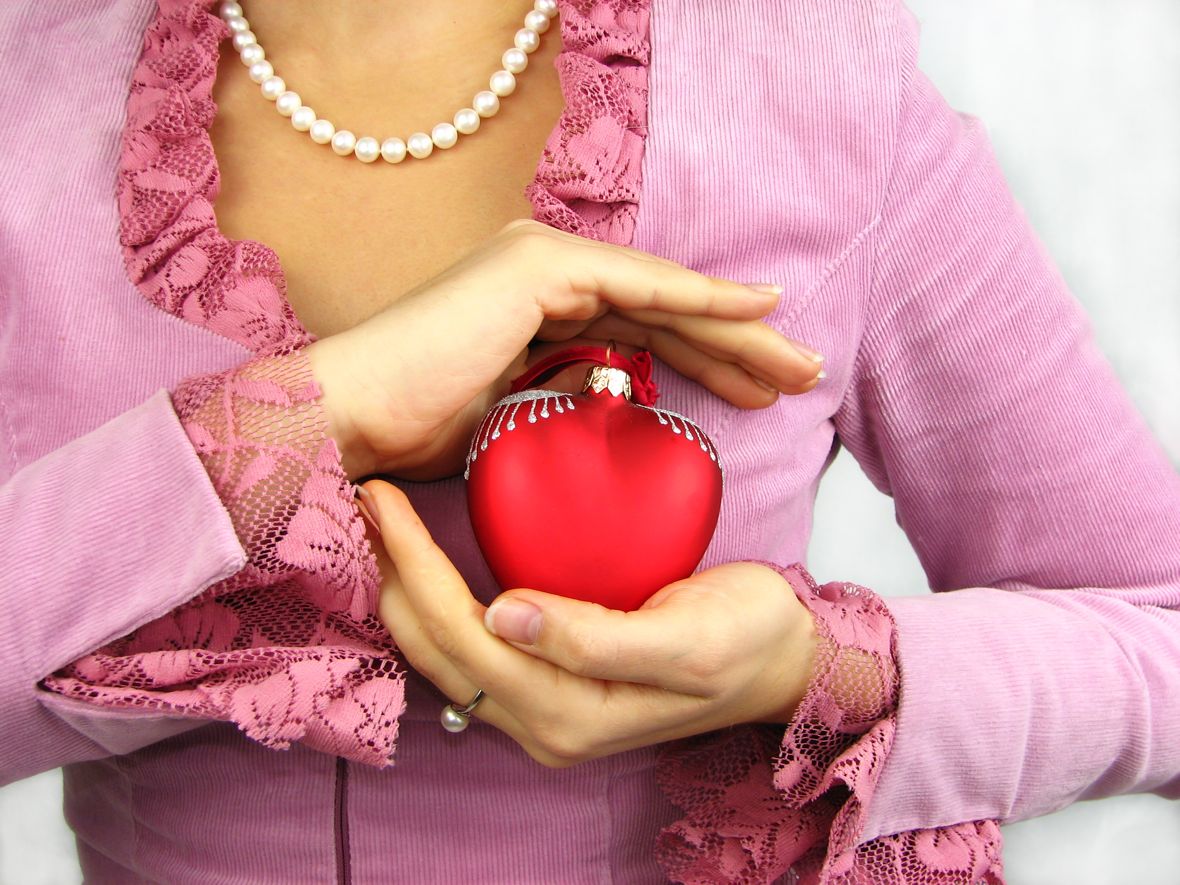Janine Krolikowski, ultrasound technician, had a heart attack at the age of 46.
(She’s featured in February’s issue of Prevention.)
Her mother had died of heart disease at 49, and her father at 51, but she never suspected that the disease could hit her so early in life, or that her symptom of dull pain between the shoulder blades was a warning sign.
“Listen to your inner voice when you know something is wrong,” she says. “Before women can take care of anyone else, we need to put ourselves and our health first.”
Women Have More Subtle Symptoms
Research shows that when it comes to heart attacks, women’s symptoms are very often different from men’s. Whereas men may experience severe chest pain, women more often feel especially tired and experience sleep disturbances, indigestion, pain in the jaw and neck, and shortness of breath.
In fact, many women experience no chest pain at all, while the other related symptoms can go on for as as much as a month before the actual attack.
Because these symptoms are so different from the “typical” heart attack symptoms, many women end up waiting too long to seek help. Unfortunately, that often means that they suffer more damage to the heart, and end up having a tougher time recovering afterwards than men do.
Doctors May Dismiss Women’s Complaints
Women can also experience a lack of attention from their doctors.
Because the studies illuminating the symptom differences between women and men are still new—and many doctors still consider chest pain to be the main symptom when it comes to heart attack—even if you suspect something may be going wrong with your heart, your doctor may not take you seriously enough.
In fact, according to surveys, women are less likely than men to receive beta blockers, aspirin, or nitrate therapies within 24 hours of being admitted to the hospital, and are also less likely to undergo heart surgeries, but are more likely to die of a heart attack.
“Physicians need to take women’s health complaints seriously and understand that not all the guidelines apply to women, whose heart symptoms may appear more non-specific,” says Roberta Bogaev, M.D., a cardiologist and medical director of Heart Failure and Transplantation at the Texas Heart Institute and St. Luke’s Episcopal Hospital. “It’s important for women to have a good working relationship with their doctor and be aware of their own risk factors for heart disease.”
Listen to Your Body
How can you determine the difference between fatigue that’s a result of not enough rest, and fatigue that could signal a heart attack? Listen to your inner voice, and listen to your body. No one knows your body like you do.
You know if something is “off,” “weird,” or just doesn’t feel right. The problem is that women tend to shrug off these things. We don’t want to be a “bother,” or to “burden” others with what may be just an upset stomach. There’s everything and everyone else to take care of, right?
Just remember. You can’t take care of everything and everyone else if you’re dead.
Did you know know that heart disease is still the number-one killer of women over the age of 65 in the United States? It kills more women in that age group than all the cancers combined.
According to the Brigham and Young Women’s Hospital: “Women often resist getting lifesaving care for heart attack symptoms” because a) they don’t think the symptoms signal a heart attack, b) they wait and see if symptoms go away, c) they feel embarrassed to go to the emergency department, and d) they defer to the needs of others rather than their own.
Yet even a delay of thirty minutes can mean the difference between a smooth recovery and a rough one—or no recovery at all.
Bottom line: if you suspect a problem, call 911. Don’t wait more than five minutes. Don’t worry about symptoms being a “false alarm.” Don’t be concerned about bothering others. Get to the hospital and ask for tests that would diagnose a heart attack.
If, in the end, you’re lucky and it wasn’t a heart attack, what did you lose? A little time, maybe a little pride. But much better that than to lose your life.
© Kudrashka-a | Dreamstime Stock Photos & Stock Free Images

